
views
Eating Fugu Sashimi Safely

Understand the risks. The fugu fish produces a deadly toxin called tetrodotoxin, which causes the body's central nervous system to gradually shut down. People who are poisoned by tetrodotoxin are fully conscious as they experience symptoms like dizziness, muscle paralysis, incoherent speech, asphyxia, and cardiac arrest. Fugu is safe to eat when it is prepared correctly by an experienced chef, but if it is prepared incorrectly, a single bite can kill a person. There is no antidote for tetrodotoxin, so many people who are exposed to it die. EXPERT TIP "Never try to prepare fugu yourself. Only eat it if it's been prepared by an experienced chef." Claudia Carberry, RD, MS Claudia Carberry, RD, MS Master's Degree, Nutrition, University of Tennessee Knoxville Claudia Carberry is a Registered Dietitian specializing in kidney transplants and counseling patients for weight loss at the University of Arkansas for Medical Sciences. She is a member of the Arkansas Academy of Nutrition and Dietetics. Claudia received her MS in Nutrition from the University of Tennessee Knoxville in 2010. Claudia Carberry, RD, MS Claudia Carberry, RD, MSMaster's Degree, Nutrition, University of Tennessee Knoxville

Know where it's legally available. If you are in Japan, you should have a relatively easy time finding a restaurant that serves fugu sashimi. It is very important, however, to ensure that the establishment has a good reputation and is licensed to serve the fish. Most incidents of fugu poisoning occur at unlicensed establishments where inexperienced chefs prepare the fugu. There are a handful of restaurants in the United States that are licensed to serve fugu sashimi, although it must be imported from Japan pre-sliced. Fugu is illegal in the European Union.

Ask to see the chef's certificate. In order to be legally permitted to prepare fugu, a chef must be licensed. This is meant to ensure that only the most skilled and well-trained chefs are allowed prepare this potentially deadly fish. If you plan on trying it, make sure to ask for evidence that the chef is properly licensed. To get licensed, a chef must undergo a three-year apprenticeship program and take a rigorous exam, which the majority of applicants fail. Chefs in the United States may not have this license, as they do not slice the sashimi themselves. (This is still done by a licensed individual in Japan.)
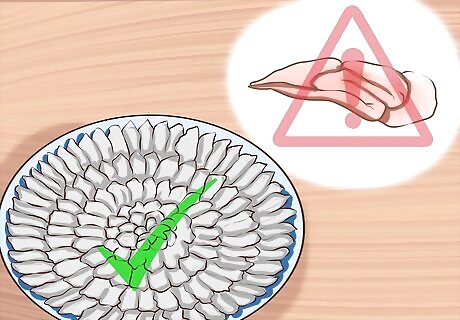
Avoid the most toxic parts of the fish. The liver, ovaries, and intestines contain the highest concentrations of toxins, so these should be avoided by all except the biggest risk-takers. The meat of the fish contains very little poison, unless of course it is contaminated by the organs during preparation. Organs are sometimes served with the sashimi, but they must be specially treated to remove the toxins and are more risky to eat than the meat. The testicles are also very poisonous, but these are considered a delicacy in some areas.

Choose the least poisonous species. There are many different species of fugu, all of which are poisonous. While they are all potentially dangerous, the torafugu or tiger puffer has the least poisonous blood, which makes it the safest to eat.

Consider a poison-free variety. Some companies are raising fugu in captivity and restricting their diets to prevent them from producing their deadly poison. If you want to limit your risks when trying fugu sashimi, consider eating a farm-raised fish. Research is still being done on the safety of farm-raised fugu, so it's best to still stick with a licensed chef, even if the fish is farm-raised.

Get immediate medical treatment if you have symptoms of poisoning. While there is no antidote for tetrodotoxin, immediate medical intervention may be able to save your life if you are exposed. Doctors can use activated charcoal to absorb the poison and can also help you breathe so you don't asphyxiate from the toxin's effects. If your tongue feels numb, you need medical attention right away, as this is usually the first symptom. A slight tingling in the lips is usually okay. Other symptoms include dizziness, vomiting, and muscle paralysis.
Enjoying Your Fugu Sashimi

Prepare to spend a lot. Fugu is an expensive dish, so expect to spend a lot on your meal. Depending on the type of dish you order, you could pay up to $200. The steep price has a lot to do with the complexity of the preparation. It's best to avoid cheap fugu from establishments that are not reputable, as it may not be safe. Some restaurants offer à la carte options if you don't want to spend too much and you only want to taste a small piece of fugu sashimi.
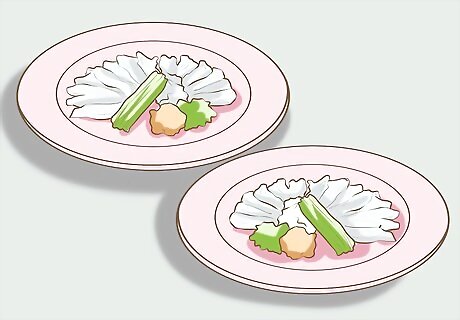
Know what to expect. Fugu is a mild, chewy fish. Some people find fugu sashimi bland. If you typically enjoy more flavorful fish, you may be disappointed with fugu, so consider ordering only a small amount when you first try it.
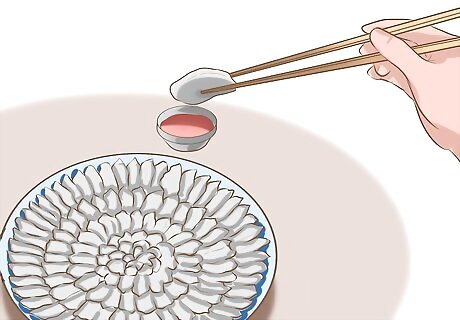
Take advantage of flavor-enhancing garnishes. Because fugu is very mild, you may want to add a little flavor. Fugu sashimi is often served with garnishes and sauce, so try eating these with the fugu for a more flavorful bite. Your fugu may be served with radishes and scallions, which will add some wonderful flavor to the fish. Ponzu sauce is often provided with fugu sashimi dish, so try dipping the fish in this to enhance the flavor. This is a vinegar-based sauce that has a slight citrus flavor.

Eat fugu in the winter. The wintertime is considered the best time of year for eating fugu because the fish's bodies fatten up during this time of year. If you want to get the most out of your fugu experience, eat it during the prime season. Be aware that because it is at its best, fugu is typically more expensive during the winter.
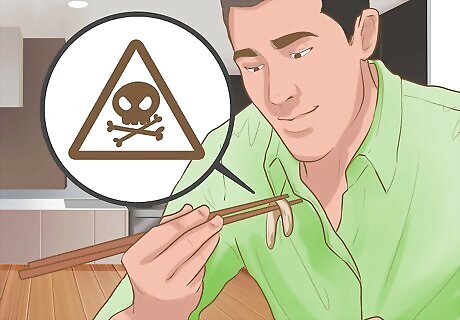
Consider eating a small amount of poison (if you're a daredevil). Some expert chefs purposely leave a trace amount of poison in the fugu when they prepare it. This causes a mild tingling effect in the lips, which many diners enjoy. It may also cause a sense of euphoria.
Complementing Your Sashimi With Other Fugu Dishes

Get a salad. If you want to have an entire fugu meal, you may want to start with a salad. Some restaurants offer options that contain fugu skin. In order for the skin to be safe to eat, the chef must remove the fish's spikes.

Consider techiri. Another popular option for consuming fugu is techiri, which is a hot broth that contains vegetables and fugu. In this dish, the taste of the fugu is hard to detect, as the broth and vegetables have stronger flavors.
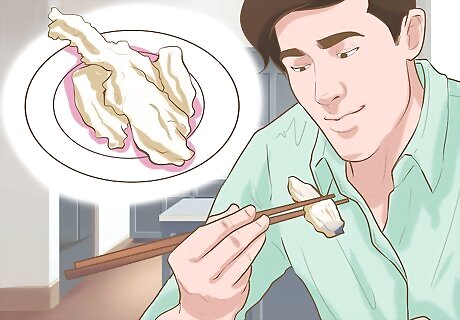
Try it cooked. In addition to serving fugu raw, the Japanese also eat it cooked in a variety of dishes. Popular options include hot pots and fried dishes. Fried fugu is likely to appeal to a Western palate, as it tastes something like chicken. If you're very daring, you may want to try eating some of the more poisonous parts of the fish. For example, in some places you can find cooked fugu testicles.

Try a fugu drink. At some high-end restaurants, you may be able to find hot sake mixed with a spoonful of the fugu fish's testes, which are highly poisonous. More commonly, you can find hot sake that has had fugu fins steeped in it. The fugu gives the sake a savory flavor. You should let it steep for a few minutes at your table before you drink it for the best flavor.




















Comments
0 comment